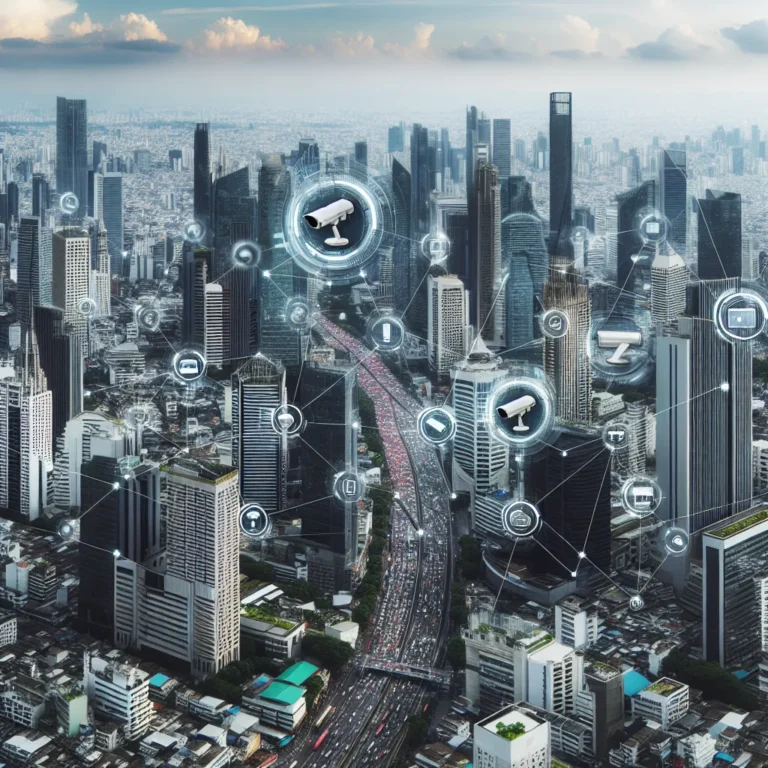
The article introduces the concept of unobtrusive observation, highlighting its significance in covert research as a means to gather data without impacting the natural behavior of subjects. It emphasizes the benefits of this approach in accessing authentic information, particularly in sensitive topics, while allowing for longitudinal studies and examination of naturally occurring phenomena. Furthermore, it explores various types of unobtrusive research methods, such as content analysis, archival research, and non-reactive research, detailing how they enable data collection without direct interference. In addition, it delves into the ethical considerations inherent in covert research, emphasizing the importance of respecting participants' rights and well-being. This comprehensive overview outlines the ethical and effective conduct of unobtrusive observation, making it essential reading for researchers across disciplines.

The article explores the implementation of AI-powered surveillance systems to enhance urban security, emphasizing the benefits of real-time monitoring, behavioral pattern recognition, and anomaly detection. It highlights the efficiency and proactive nature of these systems in identifying security threats and unauthorized activities, ultimately leading to quicker responses and crime prevention. Additionally, the article discusses the adaptive learning capability of AI-powered surveillance systems, reducing false alarms and optimizing security resource allocation. Another aspect is the cost-effectiveness of these systems, contributing to the creation of safer urban spaces. The second part of the article focuses on the role of IoT in revolutionizing urban security through real-time monitoring, predictive maintenance, and predictive security models, emphasizing the interconnected nature of IoT devices in facilitating a coordinated response to security incidents. Overall, the article provides a comprehensive overview of how AI and IoT are reshaping urban security, making it a compelling read for those interested in innovative solutions for safeguarding urban environments.

The article delves into the ethical complexities of covert operations, underscoring the moral dilemmas arising from the secretive and controversial nature of such activities. It highlights the need to carefully weigh potential consequences against the perceived necessity of these operations, emphasizing the ethical considerations at play, including implications on legal, moral, and political grounds. The delicate balance between operational secrecy and ethical imperatives of transparency poses a formidable challenge in the realm of covert operations, with a keen focus on accountability, oversight, and preventing potential abuse of power. The potential consequences on innocent bystanders, geopolitical stability, and diplomatic relations also demand meticulous consideration, requiring an acute awareness of the far-reaching and unintended ramifications of covert operations. The article navigates these complexities, urging a nuanced and conscientious approach to decision-making in the realm of covert operations, ultimately emphasizing the need for a thorough understanding of the moral dilemmas and ethical considerations at hand.

The article "Introduction to Detection Technology" provides a comprehensive overview of the history, advancements, and latest innovations in the field of detection technology. It discusses the crucial role of detection technology in various industries, such as security, healthcare, environmental monitoring, and manufacturing, detailing the evolution of detection devices from rudimentary beginnings in the early 20th century to the sophisticated technology we have today. The article explores groundbreaking developments such as the Geiger-Muller counter, metal detectors, and gas chromatography, highlighting the significant impact of detection technology on areas such as nuclear research, environmental protection, and security. Moreover, it delves into the latest innovations in detection technology, including the integration of artificial intelligence and machine learning algorithms, improvements in thermal imaging and multispectral imaging technology, and advancements in biometric recognition technology, emphasizing the rapid progress and promising future of the field. This insightful article is a must-read for anyone interested in understanding the evolution and cutting-edge developments in detection technology.

The article delves into the critical role of counter-surveillance in safeguarding privacy in today's tech-driven society, emphasizing the increasing risk of unauthorized monitoring and the need for proactive measures. It highlights the empowering nature of counter-surveillance in enabling individuals and organizations to protect their privacy and confidentiality from intrusive surveillance, underscoring its indispensable role in today's interconnected world. Furthermore, it emphasizes the importance of understanding and implementing counter-surveillance practices to mitigate the risks associated with unauthorized surveillance and uphold the fundamental right to privacy. The subsequent piece examines how counter-surveillance shapes the modern concept of security, encompassing a wide array of challenges and providing proactive measures to detect, deter, and mitigate potential threats posed by surveillance across both physical and digital realms. It further stresses the integral role of counter-surveillance in maintaining individual privacy rights and the integrity of sensitive information, concluding that leveraging technological advancements and comprehensive security protocols is essential for safeguarding privacy in today's evolving threat landscape.

The article "Revolutionizing Object Detection: A Comprehensive Overview of the Latest Technologies" provides a detailed exploration of the recent advancements in object detection technologies. It emphasizes the impact of deep learning techniques, particularly convolutional neural networks (CNNs), in enhancing the accuracy and reliability of object detection systems across various applications. The integration of advanced sensor technologies, interdisciplinary approaches combining computer vision with natural language processing and reinforcement learning, and the potential real-world applications further underscore the transformative nature of these innovations. Additionally, the article "Breaking Barriers in Object Detection: Innovations Shaping the Future" highlights the pivotal role of advanced hardware, such as GPUs, TPUs, and specialized ASICs, in empowering real-time object detection and tracking, along with the implications of 3D object detection techniques in areas like augmented reality, robotics, and urban planning. These comprehensive insights into the latest technologies in object detection make the articles a compelling read for those interested in staying abreast of cutting-edge developments in this rapidly evolving field.

The article explores the historical evolution of surveillance and privacy, tracing its origins from ancient civilizations to the modern digital age. It highlights the methods used by rulers and governments to monitor citizens, revealing the gradual development of privacy concepts over time. The Industrial Revolution and digital age are identified as key periods that revolutionized surveillance technology, posing new challenges to privacy protection. The article emphasizes the importance of understanding this historical context in order to grasp the contemporary debates and challenges surrounding surveillance and privacy. In addition, it delves into the legal and ethical concerns arising from modern surveillance technology, particularly focusing on issues of consent and the potential for abuse of surveillance powers, encouraging readers to consider the balance between security and privacy in today's interconnected world.

The article delves into the ethical implications surrounding the integration of surveillance technology in modern society, emphasizing the delicate balance between security and privacy. It highlights the contentious debate sparked by the use of surveillance technology in public spaces, workplaces, and personal devices, underscoring concerns about potential abuse of power and invasion of privacy. The ethical complexities associated with advanced surveillance tools, such as facial recognition systems and biometric tracking, are thoroughly examined, raising significant apprehensions about consent, data security, and the risk of discriminatory practices. Ultimately, the article underscores the paramount importance of striving for an ethical equilibrium between security and privacy to ensure responsible and transparent use of surveillance technology in society.

The article "Navigating Challenging Terrains: Technical Routes for Advanced Climbers" delves into the intricate skills and mental fortitude required for conquering difficult climbing routes. It emphasizes the importance of understanding challenging terrains and their specific demands, such as the ability to read terrain effectively, employ specialized climbing techniques, and utilize various protection placements for safety and progression. The piece also highlights the continuous honing of abilities needed for conquering demanding routes, pushing the boundaries of climbing possibilities. Additionally, the article "Mastering Vertical Ascents: The Best Paths for Experienced Climbers" underscores the critical factors in choosing optimal climbing paths, such as reading rock formations, utilizing specialized gear, and seeking a balance between technical difficulty and mental engagement. It encourages experienced climbers to prioritize safety and meticulous planning when selecting and approaching routes, showcasing the complexities and rewards of mastering vertical ascents.

The article discusses the controversial practice of covert observation in research, exploring the ethical dilemmas and debates it sparks within the academic community. It delves into the clash between the benefits of obtaining authentic data and the ethical principles of respecting individuals' autonomy and right to privacy. While proponents argue that covert observation is necessary to gather unbiased data in natural settings, critics emphasize the violation of privacy and autonomy. The ethical concerns surrounding covert observation, including potential psychological harm to subjects and lack of transparency, are thoroughly examined. As the debate continues, the article urges researchers and ethical review boards to carefully consider the trade-offs between the potential benefits of authentic data and the ethical responsibilities to protect the rights and well-being of research subjects, highlighting the central challenge of balancing knowledge pursuit with ethical treatment of individuals.









